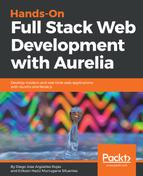In this kind of testing, we won't use any automated script. It enforces the tester to use the application as a common user and evaluate aspects such as design, how easy our product is for the final users, how is the user experience, alternative workflows, and more. The tester may identify any failure regarding these aspects and provide valuable feedback to developers.
Since explanatory tests do not use scripts, there is still pre-planning. In real-life situations, commonly in session-based exploratory testing, the testers team sets goals for the planned tests and defines a time frame to perform exploratory testing in focused areas. All this information is introduced in a document called test-charter. Sessions and results of exploratory testing are documented in a report and reviewed in the daily meeting with the entire team.
The advantage is that testers have more time to focus on the actual testing, because the time to prepare test cases and look at boring documentation is reduced, becoming a constant challenge to find more issues and increase their business knowledge.
The disadvantage is that this kind of test is not auto-executable and of course, cannot be repeated to be used as a regression test. Also, you will need testers with a deep understanding of your business requirements that most of the time are hard to find. In addition, in real-time scenarios, it may be impractical to try to cover an entire application with exploratory testing since we won't find enough testers with the required knowledge about the product.
